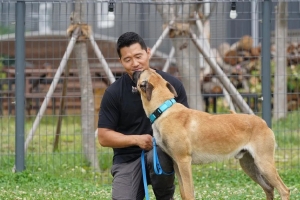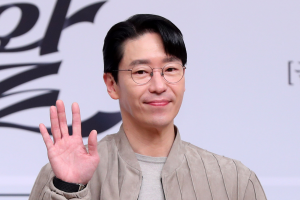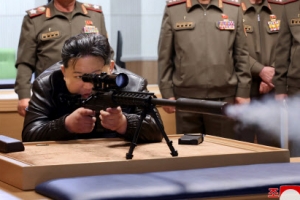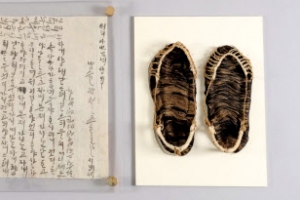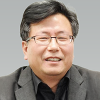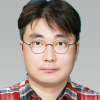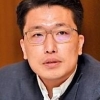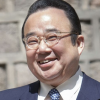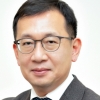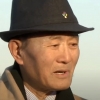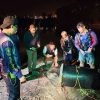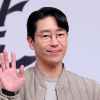The author of ‘The Sport Gene’... It is not late to choose a sport at the age of 20, after experiencing all kinds of sports
Can a genetic test tell whether my child who seems to be talented in sports will be able to succeed as a professional? When is the best time to select the right sport? If the child puts in efforts of more than 1 million hours, will he/she have the ability that no one can possibly think of challenging? There might be a quite large number of parents with such questions.David Epstein, the American sports-science journalist who published ‘The Sports Gene’ in 2013 advised through the e-mail interview that ‘There is no such test like that at the moment. It is actually best to experience diverse kinds of sports in one’s adolescence and choose a certain sport when one comes of age, being able to check one‘s degree of achievement and concentrate fully on the choosen sport’. Apart from certain sports such as golf and gymnastics, too much of either early or immersion education is not recommendable in sports.
Following are the Q&As.
?First, I have to confess that I was personally touched by the well-done research and committed interviews. I guess that the time for writing took much longer than you had expected. Also, what were the reasons that you decided to write this book and how much are you satisfied with the outcome?
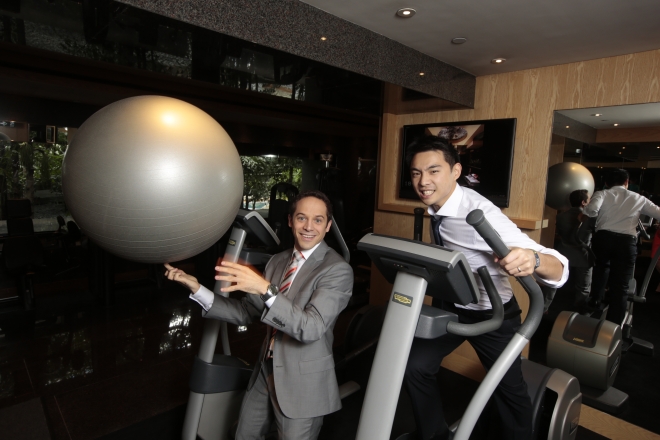
Provided by David Epstein
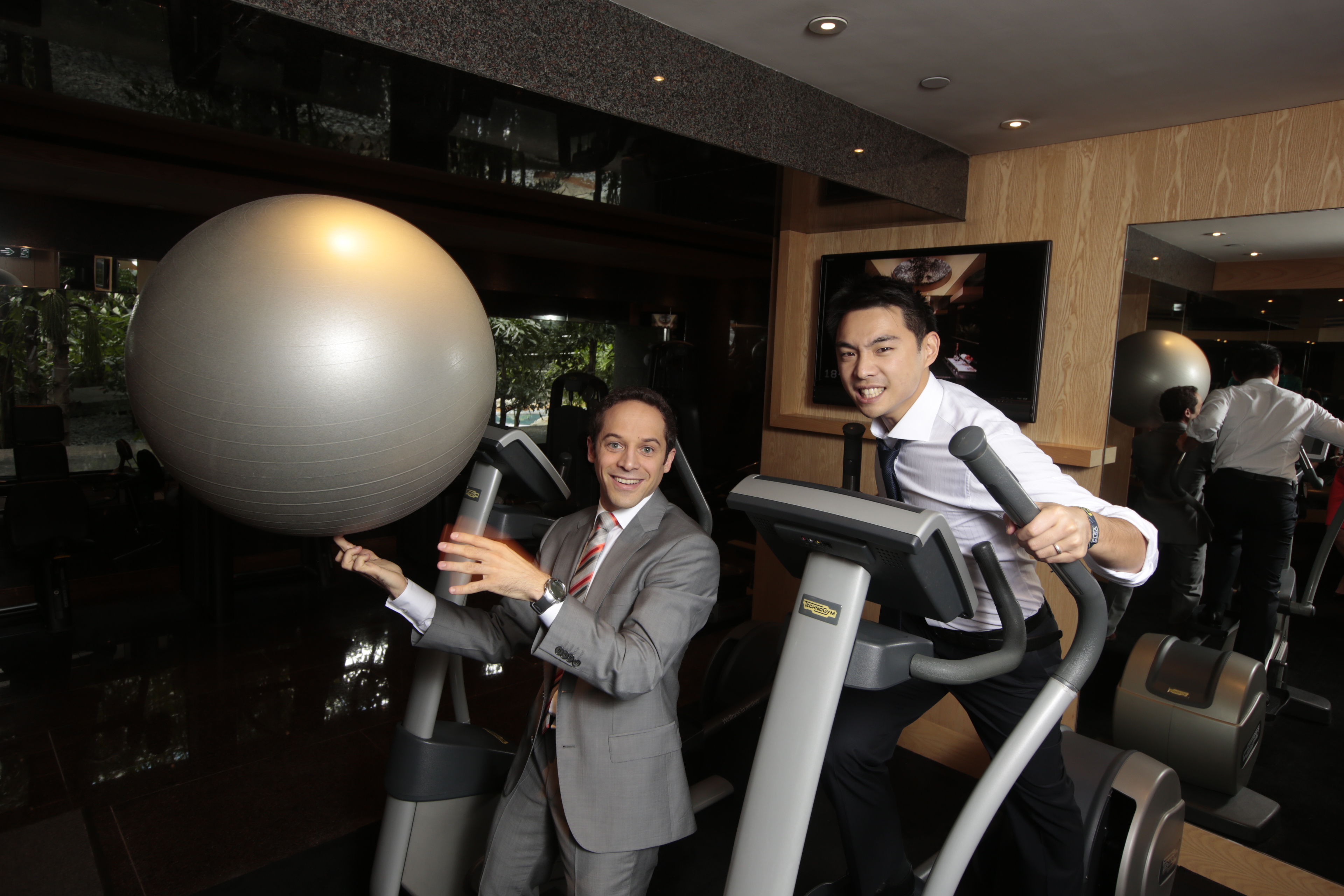
American sports science journalist David Epstein is spinning a ball with his finger at a fitness center in Hong Kong. The former varsity track-and-field runner is recently trying his best at spinning any object with his finger.
Provided by David Epstein
Provided by David Epstein
-The research time for the book did indeed take longer than I expected. The topic was so complex, and there was, unfortunately, a lot of poorly done science I had to sift through to find the best work. (I was lucky I had a science background that helped with that.) For the first year, I did not write a word, I only tried to read 10 scientific papers a day, every day.
As far as why I decided to write the book, it really came out of my own experience as an athlete, and as a sports spectator. I grew up in an area outside of Chicago where I ran on high school track teams with a lof of Jamaican immigrants. We had so many amazing sprinters, and when I realized Jamaica was an island of 2.5 million people, I wondered what could possibly be going on there to make so many fast sprinters?! And then in college, I moved up to run longer distance, and now I was running against Kenyan athletes, and learning that they weren’t just Kenyan, they were all from one small minority tribe, the Kalenjin. So, again, I’m wondering: What in the world is going on over there? Those questions combined with things I would see on television, like a women’s softball pitcher striking out the best Major League hitters.
As soon as I saw that, I made an estimate calculation of the speed of her pitch and the closer distance of the mound to see if there was less time to swing, and there wasn’t, so I wondered why the men couldn’t hit it. So I just kept keeping all these questions in my mind, and when I had the opportunity, I wanted to go as far toward answering them as possible using the best available science. So really it was my own curiosities, and I didn’t know that so many other people would be interested.
?Your book‘s greatest strength may be that the readers can go through your experience as a varsity track-and-field player for 800 meters and also the interviews with Barry Bonds and Jennie Finch. Your theory of knowledge bulk was really intriguing as well. So, what you really wanted to say is that one cannot choose between nature and nurture. Concentrated workouts are important, however, there is no need to put in 1 million hours of work. One can experience diverse kinds of sports while he/she is young and then once he/she comes of age, he/she can choose one specific filed and put in his/her efforts. This is what you offer as an advice for parents who have kids that seem to be talented with sports. Is it right?
-That’s right. The science has moved past the question of “nature or nurture,” and on to attempting to figure out what the balance of nature and nurture is in any specific situation. Without both genes and environments, there are no outcomes at all. So the real quest is to understand the interplay of nature and nurture, and how we can best use it. And this is important, because some people asked me after the book came out why scientists even study genetics if we can’t change it. The answer is that we can alter environments so that people get more out of their genetics.
That’s why I use that quote toward the end of the book by J.M. Tanner?who was the world’s expert in body growth and development, and was a worldclass athlete: “Everyone has a different genotype. Therefore, for optimal development, everyone should have a different environment.” The more we understand about nature, the more we can help tailor the nurture to help everyone get the best out of themselves.
As far as putting in hours of work, you’re exactly right. There is no magic number of hours. When I went through the work about the 10,000-hours rule, I expected to find something amazing I could write about. But what I found was work filled with statistical problems that needed to be addressed, because it’s actually damaging the development of athletes. The actual research shows that the typical route to success in most sports?and in fact many other activities?is to have a “sampling period,” where the learner has exposure to a wide variety of skills early, before then focusing in and specializing. That’s why I added an afterword to the book, and you can see, on pages 416 and 417, I added the charts with the aggregate data that show the development path of elite athletes. They sample sports early, and practice less and in a less technical manner early on than their peers who plateau at lower levels.
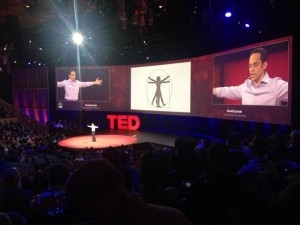
Provided by David Epstein
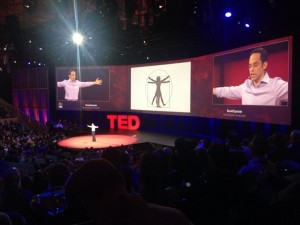
Epstein is doing a TED lecture with the topic of ‘Have the players really got faster, better and stronger?’
Provided by David Epstein
Provided by David Epstein
There are exceptions, of course, and golf may be one because it’s a very unusual endeavor, in which the athlete is not time limited and does not need to predict the actions of others. But the fact is, most performers who go on to become elite do not follow the Tiger Woods path of early specialization. They follow the Roger Federer path; his parents forced him not to focus on tennis too early, and to continue playing badminton, basketball, and soccer before he could specialize. That’s the norm for those who become creative adult athletes. (And, by the way, there is evidence the best musicians do this as well.) Still, even looking at the data, people often don’t believe me. They send me messages: “Ok, maybe in some American sport that’s true, but never in soccer!” Well, luckily for me, shortly after the German national team won the World Cup, this study came out showing that they followed this exact pattern as well. The best players spent more time in unstructured activities as kids, and put off full specialization until after their less skilled peers. The study is called “Practice and play in the development of German top-level professional football players.”
As an aside, Malcolm Gladwell and I had a public debate about this, and he conceeded that he didn’t expect people to take the 10,000-hours so seriously. You can see it here on YouTube. He and I have become running partners, so we continue to discuss on our own time!
?What was the most difficult part of writing the book? Even though you are an investigative reporter, it would have not been easy to do interviews while traveling since you would have to check the sources and work on the drafts on the plane.
-Well, I didn’t have to do too much on planes, because I took a long time to write the book. When I chose my publisher, my priority was not the best financial offer, but the publisher that would make me an equal partner in determining how long I needed in order to write the book. In some ways, I still felt rushed, but I didn’t want to be on the normal timeline of one year or 18 months, because I knew I needed to learn a lot of material. So that was ok. It was a challenge, though, to arrange some of the interviews. In the last chapter of the book, I tracked down a man who was living as a reindeer farmer in the Arctic, and didn’t speak English, and it took me a while even to figure out that he was still alive and I should go visit him!
Really, though, there were two aspects that stood out as very difficult: 1) If I wanted to give an honest examination of the top, I had to write about race and gender, and those are very sensitive topics. I got my CV ready just in case I had to find a new job. 2) I learned that some of my own intuition about the world was incorrect. I learned how hard it is, even faced with the data, to change my mind about certain things I believed for a long time and wanted to continue believing. It just took me some time to come to terms with that and write honestly about the data. For example, the chapters about genetic diversity in Africa, and about how physiology influences the willpower to train, were at first hard for me to digest intellectually, because much of the information was contrary to my intuition. But, in the end, that is why we have science, because we can’t rely on our intuition.
---------------------
Two-thirds of Koreans have the gene which can pass through the doping(prohibited substances) test?
David Epstein’s book ‘The Sports Gene(Translated version p.213)’ contains dangerous content that can instill a false belief on a quite large number of athletes in this nation.
Swedish scientist Jenny Jakobsson Schulz, utilizing data from both Sweden and Inha University Hospital in Incheon, found out a scandalising fact. Those who have a pair of the gene mutant ‘UGT2B17’, which has the ability to cheat the most common anti-doping screening test ‘T/E ratio’, were more commonly found in East asia. The team actually mentioned that especially two thirds of Kroeans have this mutant.
The T/E ratio test which searches for the ratio of testosterone to another hormone called epitestosterone views the ratio of 1:1 as normal and if the ratio goes above 4:1, than that there is a possiblity of doping. The research team determined that a lot of people have a gene that influences how they excrete testosterone in their urine, and they can dope without the T/E ratio changing, so they will still pass the test. They recommend that for drug testing to be more effective, it would have to be genetically tailored.
On the 23rd of the last month, I requested an authority from Korean Anti-Doping Association(KADA) about how much of this is true and how much information do the domestic researchers and the KADA have on this news.
Epstein further explained on this by answering “When I too asked anti-doping officials about this work, some of them said, ‘Oh no, it’s fine, that’s not right.’ Or, ‘That’s very rare.’ But it is right, and it’s not rare, so they are in denial.”
“The good news, though, is that the T/E ratio test is becoming less important, as technologies like the biological passport are taking over.” He added, “Christiane Ayotte, one of the top anti-doping scientists in the world, was more honest. She told me, ‘This is one reason why I can’t retire until we have a better screening test than the T/E ratio.’.
KADA Education-PR deputy answered on the 3rd, ”T/E ratio is just a primary testing method and is not used as a decisive material for the doping judgement. For example, we use secondary test methods such as IRMS, and also a biological informational system with diverse information for making the final conclusion. So, passing the T/E ratio test does not mean that one can avoid the doping test.”
Senior reporter Byong Sun Nim bsnim@seoul.co.kr






